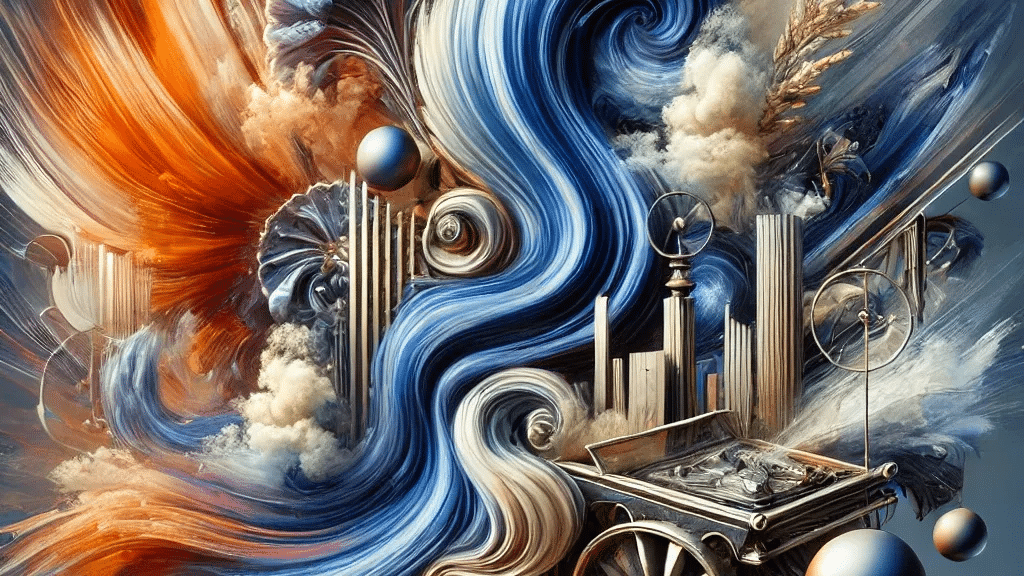Innovation – the Future of Innovation in the Luxury Sector for the Next Decade: between Disruptions and Paradoxes

The luxury sector, particularly watchmaking and jewelry, is going through a pivotal era. After several interviews with key players in subcontracting and brands, it is clear that innovation, as it is currently presented, oscillates between real opportunities and a smokescreen for an industry sometimes hesitant in the face of revolutions. Let’s decipher the major trends and challenges for the next ten years.
Authenticity, the Key to Success
Clients, more demanding than ever, are no longer swayed by superficial commercial partnerships between major brands and celebrities. This type of communication, disconnected from the deep values of luxury, seems to be running out of steam. Modern consumers, particularly millennials and Generation Z, seek authenticity. They want their purchases to embody both ethical and cultural values.
It is time for major houses to refocus on their DNA, their history, and their true expertise. Marketing overkill, lacking depth, risks pushing clients to explore smaller brands, often perceived as more credible and closer to their aspirations.
Innovation or a False Promise?
Innovation in luxury has often been presented as a driver of differentiation. However, a reflection is necessary: isn’t it, in many cases, a strategy to mask a lack of vision or risk-taking? Many major brands scrutinize small, independent, agile, and flexible houses to draw inspiration. This transfer of creativity highlights a paradox: true innovation often comes from elsewhere.
Furthermore, the rise of artisanal crafts and extremely complex pieces signals a form of “return to roots.” Tomorrow’s luxury increasingly values artisanal craftsmanship, limited editions, and a long-term perspective. This “step back” reinvents innovation from a more human and meticulous perspective.
One could thus speak of “slow innovation” through this return to greater durability and artisanal perfection, a quest for meaning that challenges and disrupts the sector’s pseudo “prerequisites.”
Transversality and Eco-Responsibility: Committed Innovation
Innovation is no longer limited to products. It now includes the transversality of values upheld by a brand: social responsibility, environmental impact, and ethical integrity. Clients want to know where raw materials come from, how they are processed, and under what conditions.
This is a major evolution: luxury is no longer content with producing dream objects. It is becoming a true driver of societal change. Brands that fail to meet these expectations risk being rejected by a clientele seeking meaning.
The Circle of Collectors: towards an Intimate and Intelligent Relationship
These enthusiasts seek a unique experience, an intelligent relationship with luxury houses. They want to be involved in the history, the creative processes, and even the customization of pieces.
They refuse to be considered mere “cash cows” and aspire to a privileged and respectful relationship. This demand for intimacy, combined with an enriching brand experience, reshapes the contours of customer service in the luxury sector.
Beyond collectors, another segment is emerging:
Young affluent consumers (Millennials and Gen Z), sensitive to ethical values, sustainability, and the social impact of brands. They expect concrete commitments and immersive experiences that transcend material purchases.
AI and Creation: is Luxury Holding Back Too much?
While artificial intelligence (AI) is revolutionizing many sectors, its adoption in luxury creation remains timid. Major houses are proceeding cautiously, often fearing to lose the artisanal soul that defines their reputation. Yet, AI could play a key role in personalization and the optimization of design processes.
Paradoxically, these same houses have rapidly invested in immersive experiences such as NFTs and the metaverse, and some are already regularly utilizing AI in their communication and marketing strategies. Although the luxury sector currently seems to resist a broader adoption of AI, this reluctance cannot last.
True transformation will emerge from players capable of harmonizing human creativity with technological innovation, while preserving the essence of their identity.
Digital and Retail: a Balanced Coexistence
Contrary to alarmist predictions, retail is not dead. After a massive wave of digitalization, loyalty to physical retailers remains strong. Clients, particularly in luxury, still appreciate human contact, personalized advice, and the unique sensory experience of a boutique.
The use of augmented reality in points of sale remains timid, but could offer promising prospects for enriching client interaction.
Major brands have understood this: the future lies in a subtle balance between digital and retail. Offering a seamless omnichannel experience is key to meeting client expectations.
The Emergence of China and its Luxury Products: a State of Emergency
China is no longer merely a market for luxury; it is becoming a significant creator and competitor. Chinese luxury brands are emerging with products that meet local expectations while establishing themselves internationally.
Another phenomenon to consider is “luxury shame,” which is particularly evident in China, where some consumers are turning away from ostentatious luxury in favor of a more discreet and meaningful luxury. This shift is accompanied by a notable decrease in consumption in this market.
For historical houses, this is an alarm signal: the era when Chinese consumers only looked towards Europe is over. European luxury will need to innovate, reinvent itself, and consider China a serious competitor while continuing to cherish it as a strategic market.
Defining Luxury: Excellence, Rarity, and Long-Term Vision
Luxury remains a quest for excellence, authenticity, and rarity. It embodies exceptional craftsmanship and a long-term vision that transcends trends.
But to remain relevant, luxury must stop resting on its laurels. The next decade belongs to those who can combine traditions and disruptions, expertise and commitment, local and global. The future belongs to the bold.
And you, what do you expect from major luxury houses for the next decade? Let’s share our thoughts.
Many thanks to the twenty or so interviewees who took the time to share their vision and on-the-ground reality with me, as CEOs, Artisans, Directors.
Chronode SA, Watchmaking Manufacture
MARCEL 1907 – Precious Cufflinks 🇨🇭

